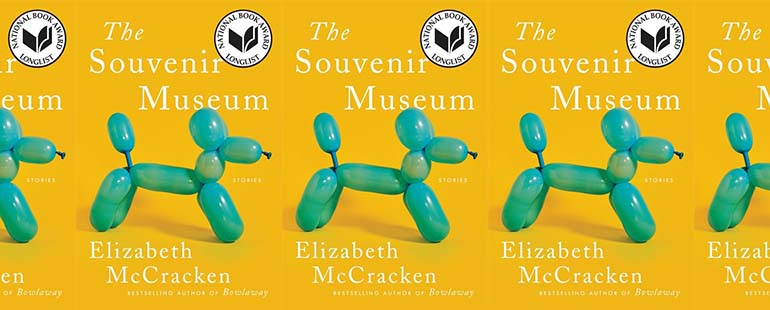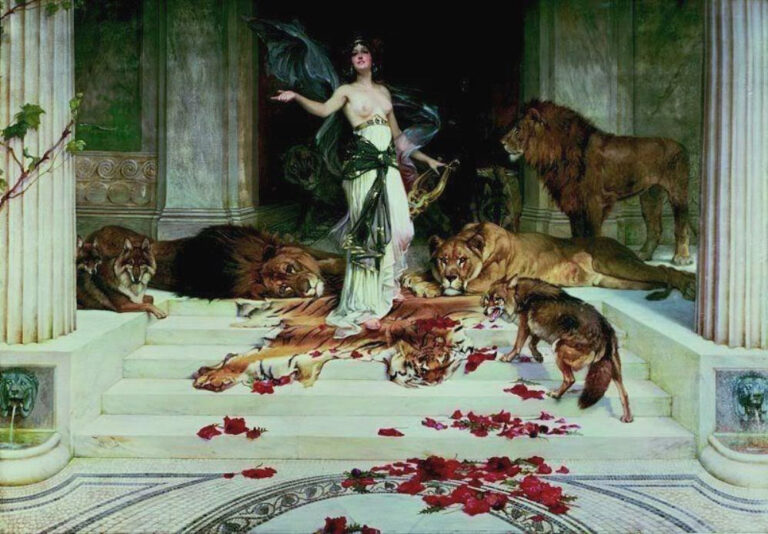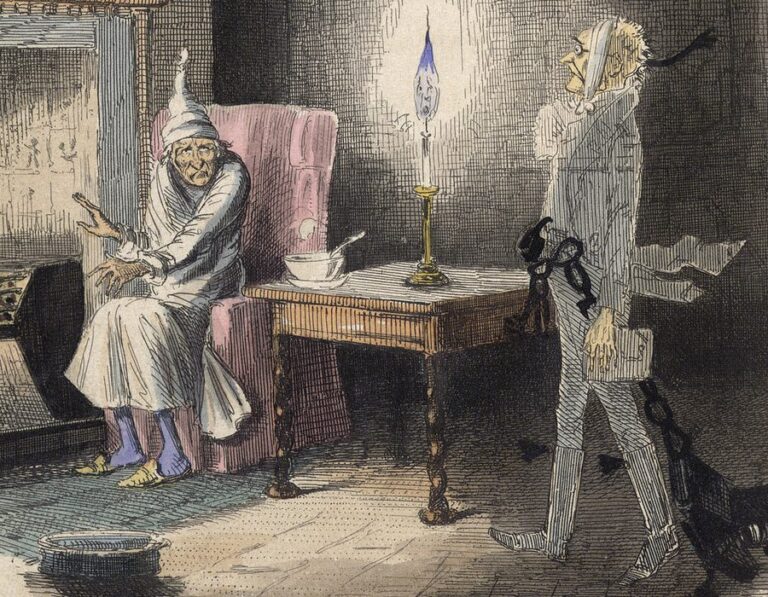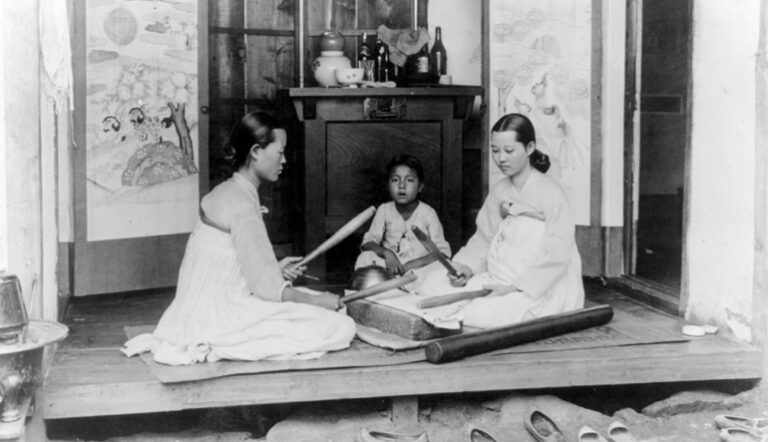The Word as Souvenir in The Souvenir Museum

They often say that the stories in a collection should speak to each other, not just sit side by side, and that it’s the spaces in between that elevate a collection to the status of art. In Elizabeth McCracken’s The Souvenir Museum—longlisted for the National Book Award in 2021—the stories do more than speak; they wink and flirt, make visual puns as though they are doing a skit together, improvising and seeing if they can get their stage partner to crack, while the reader, seeing the winks and the gestures, knows they are part of the show.
Take the example of Thea, the protagonist of “A Walk-Through Human Heart,” who scours antique shops for a vintage Baby Alive doll for her pregnant daughter—the same daughter for which she refused to buy the same doll when the child was a girl of eight. Having found and purchased it, Thea watches the doll’s mechanical lips suck at air, then immediately regrets the choice and wants to ditch it: “She could not take it home, but she could not leave it here. . . . Maybe the TSA would see it in her suitcase and blow it up,” McCracken writes. It’s a hilarious, absurd image—a doll and its motor mouth being mistaken for a bomb, caught up in an overreaction of violence, its plastic baby parts blown apart—and it itches at the reader because they swear they’ve heard it before. That’s because it echoes a line that appeared five stories earlier, in “A Splinter”: “[Jack] stared at the slack-jawed cat a while and then shut the case and left it in the airport men’s room. Let the bomb squad explode it. Let it linger in lost property forever.” The “slack-jawed cat” is a ventriloquist’s dummy—or rather, a ventriloquial figure, as Jack learns: more molded body parts blown to kingdom come. Jack is an aspiring ventriloquist, one half of an endearing couple, Jack and Sadie, whom we get to know in four of the stories in The Souvenir Museum, at different stages of their courtship. The image is evocative enough, hilarious enough, and true enough to the exasperation of the characters to be used twice and remain fresh.
There are other instances of objects and memories surfacing and recalling each other throughout the book. Take salt and pepper shakers. There’s a case of them on display in the title operation in “The Souvenir Museum”:
Two Scottish terriers, black and white. One Scottish terrier (salt) lifting its leg in front of a red fire hydrant (pepper). The next glass case was also filled with salt and pepper shakers. There was a density to the collection that felt like a headache, or the physical manifestation of dementia, where the simplest items had to be labeled for meaning: china Eiffel Towers marked PARIS, cheap metal London Bridges marked LONDON.
Like in a museum, the souvenirs in the gift shop had roles in the show we just saw: once, in “Robinson Crusoe at the Waterpark,” couple Ernest and Bruno drive past a roadside wedding and Ernest remarks that the bride and groom “looked like brother and sister . . . like salt and pepper shakers.” Later, in “Two Sad Clowns,” we get the meet-cute story of Jack and Sadie: “[Jack] didn’t mind a bit of thievery—restaurant salt and pepper shakers he took a fancy to, flowers from other people’s gardens.”
Souvenirs are, of course, about memory—literally the French verb “to remember”—so it is satisfying to have these items in “The Souvenir Museum”—the title story is the second-to-last title in the collection—serve as callbacks to lines in earlier stories.
McCracken’s writing has shown consistent love for what might be labeled actual lost arts—the object or tradition that might have once seemed as heavy and permanent as a shoeshine box or a streetcar, not quite vanished but vanishing. Her novels have given love to such niche, aged-wood subjects as vaudeville comedians (Niagara Falls All Over Again) and the geographically restricted game of candlepin bowling (Bowlaway); the stories in The Souvenir Museum give similar loving attention to ventriloquists, amusement parks, cruise ships, and, as the title promises, museums and the prized, weathered artifacts they contain. The collection evokes a lost time through such quietly weighted transactional rituals as ticket-taking (an admission band being attached to the wrist is amounted to being “married to the park”) and signing hotel registers (“Maybe you anticipated the private detective, and wrote down an assumed name”).
Many of the stories are journeys—to Ireland, to the Netherlands, to a waterpark, to Legoland—and the narration demands a careful observation of the landscape, with a raised ear for dialect. When you travel to a new place, the language has a way of coming alive, spiked with the odd phrase, which might mean something else where you come from, or, to your outsider ears, nothing at all. Many of the characters in The Souvenir Museum are alert to this, as when Jack and Sadie, visiting Ireland for the wedding of Jack’s sister, are told by the host that they are sleeping “in the snug, just for tonight”—a term whose suggestion of warmth does not win over Sadie, who might not know that, in that part of the world, snug refers to the small back room of a pub.
McCracken is extremely good at using language as a sound mechanism to orient the reader in a time and place. The waterpark in “Robinson Crusoe” is in Texas, and the story begins with the line, “They had come to Galveston, the boy and his fathers, to look at the ocean and chaw on saltwater taffy, but Galveston was solid November fog.” One can think of many reasons why McCracken settles on chaw instead of chew here—most dictionaries treat the two verbs as equal synonyms, but chaw is a Southern-flavored word, evoking the toughness of tobacco leaves and beef jerky, foodstuffs that you don’t rush to swallow, and earns its weight as an activity that you would partake in on a vacation in a way that chew does not.
The destinations of The Souvenir Museum are also places where people play equally weighted roles of give and take—as performer and audience, as hotel guest and manager, as radio host and lonely nighttime listener, as amusement park patron and employee—all participants in a social contract that might feel to the reader like the kind of sincere, noble interaction that lately has fallen by the wayside. (In Bowlaway, this intimacy is evoked in the relationship between the bowler and the “pinbody” setting up at the other end of the lane.) It’s similar to the roles occupied by the writer and the reader, who must come together at some midpoint of understanding.
And so it takes courage to put in an obscure word on the assumption that the reader will care enough to look it up. McCracken’s comfort with language in the far reaches of the dictionary is evident in these stories and extends a facility shown in her previous works. In The Souvenir Museum, we get beautiful-sounding words with plosive consonants like truckle, for a round of cheese, and pellicle, a thin skin or film, like the black fabric that goes across a radio speaker. In the story “Proof” in which David, on a boat trip with his father to look at puffins in Scotland, notices a girl on the tour with her family, the girl is described with a term from Gaelic folklore: “a selkie—a very selkie: at any moment she might assume her seal form and dive into the water.” While we are among entertainers, ventriloquists, and clowns working in stifling auditoriums crowded with laughter, we get Jack and Sadie’s young love compared to that of Punch and Judy: “Before the slapstick and the swazzle, the crocodile and the constable, before above all the baby: they’d known how to be sweet to each other.” To find out what the beautifully buzzy word swazzle means, don’t even think of looking in your Webster’s Third. You’d have to ask a puppeteer who will tell you it’s a device you put against the roof of your mouth to alter your voice—it’s what gives Punch his squawk.
There’s play with internal rhyme, in McCracken’s stories, as in the first line of “Mistress Mickle All at Sea”: “New Year’s Eve in a Rotterdam garret, the whole block blacked out, bottle rockets rattling the casements.” There’s also play between the literal and the metaphoric, as when wedding guest Sadie bemoans the thought of sleeping between an electric blanket and an air mattress as a “disaster sandwich”; the humorous image hasn’t had time to disperse from the reader’s mind when Jack and Sadie, the next morning and on the very next page, meet the groom, Piet—who is seen eating an actual sandwich, a strawberry and sugar concoction, which he shares with Jack and Sadie. And there are allusions that seem to have no basis but still pull something off. Jack’s hair is described as “dark marcel”—a word that refers to a wave made by a curling iron, named for a hairdresser, Marcel Grateau. But if your mind is already rummaging through the costume closet of mid-century theater (as mine admittedly was), you can’t help but think of Marcel Marceau. Even with the famous mime having no relevance to Jack’s appearance, the choice of word feels like a purposeful callout, one that weights it with new credibility and function.
McCracken’s willingness to reach for such artful language, and her grace in achieving so, is a benefit to the reader: even words vanish—they vanish as their referents die away, as their speakers die away, as younger generations turn to newer words to prick up the listener’s ear. And with that vanishing the writer loses a way to convince future readers of the value that bowling alleys and Punch and Judy shows and PEZ dispensers and mechanical dolls once had. Words themselves become souvenirs for real. And what is a souvenir for? Perhaps to remind you of that time you came to understand something about yourself that didn’t make sense back home, or maybe when you felt understood. It’s the same reason we can say things to bartenders—or the hotel guest soaking in the other end of the pool—that we can’t say to our loved ones. It’s why, when it’s time to go home, we look for some small thing to take back with us.


